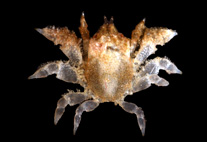Abstract
Tropical rainforest is largely restricted in Australia to the fairly continuous Wet Tropics region and disconnected patches to the north on Cape York. The Wet Tropics is relatively well explored and studied, whereas the rainforests of Cape York have received less attention due to their remoteness. Here we describe two new species of Glaphyromorphus skinks from rainforest areas on Cape York. The two new species are most similar to each other and to G. fuscicaudis and G. nigricaudis, but both are readily diagnosed on numerous traits. Glaphyromorphus othelarrni sp. nov. is diagnosed from all similar species by its supralabial count (typically 8 vs 7), high number of subdigital lamellae beneath the 4th finger (14–15 vs < 14), and its relatively longer limbs. Glaphyromorphus nyanchupinta sp. nov. is diagnosed from all similar species by its small body size (max SVL = ~ 54 mm vs > 85 mm) and slender body shape, low number of subdigital lamellae beneath the 4th toe (17–20 vs generally 20 or more), and head and body pattern. Both species also differ from each other and similar congeners in other aspects of body shape, scalation and colour pattern. Glaphyromorphus othelarrni sp. nov. is restricted to boulder-strewn rainforest of the Melville Range, whilst Glaphyromorphus nyanchupinta sp. nov. is known only from upland rainforest in the McIlwraith Range. We discuss patterns of rainforest vertebrate endemism on Cape York, and the importance of lithorefugia in generating these.

